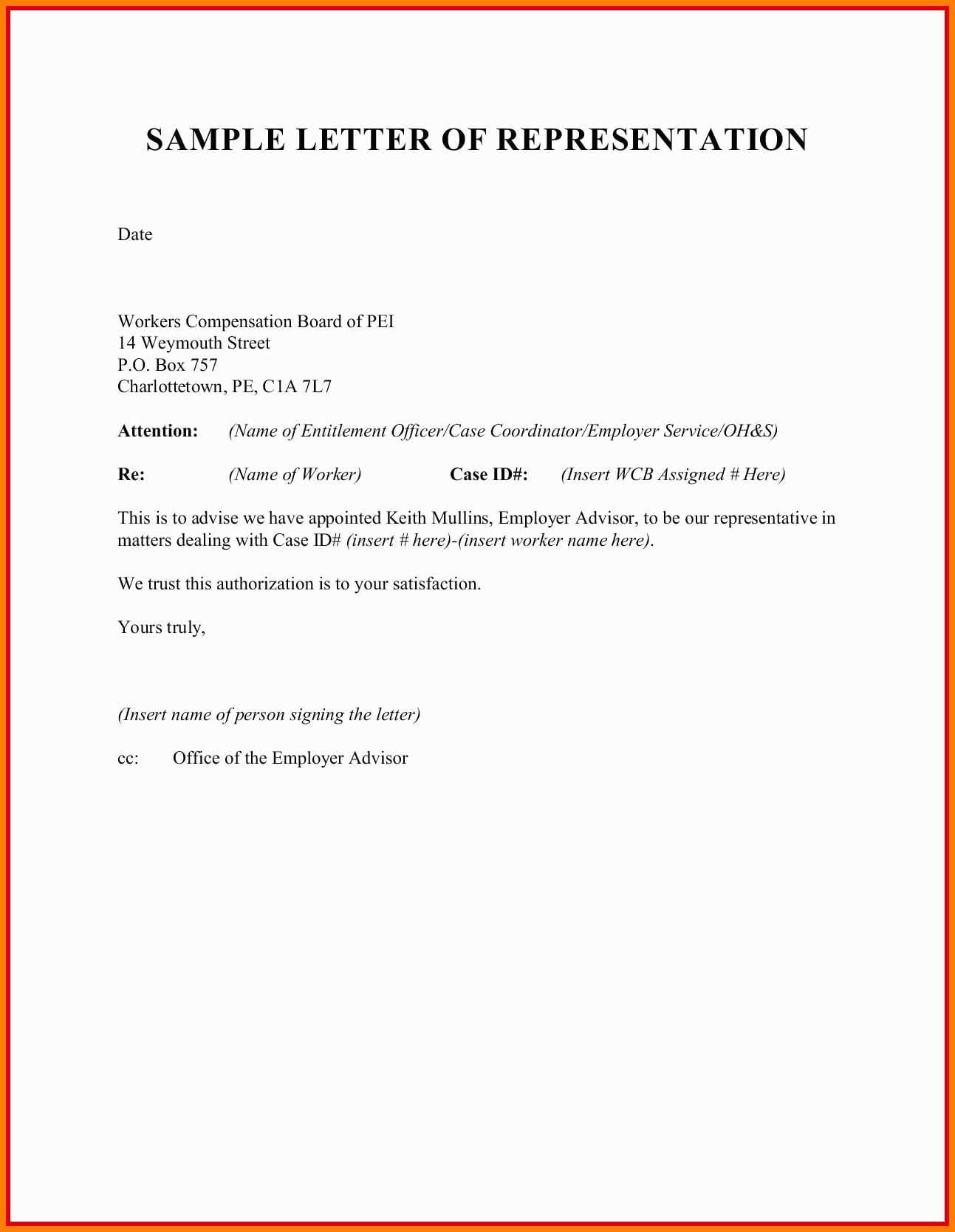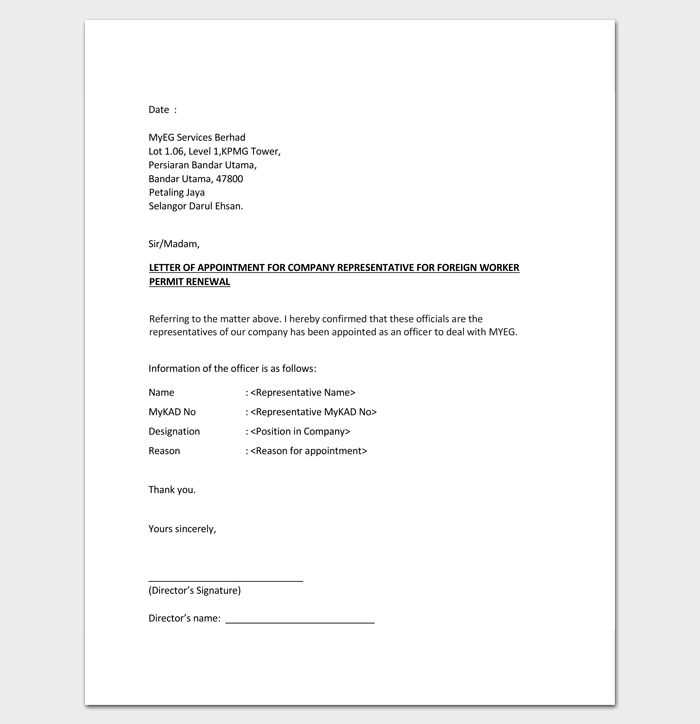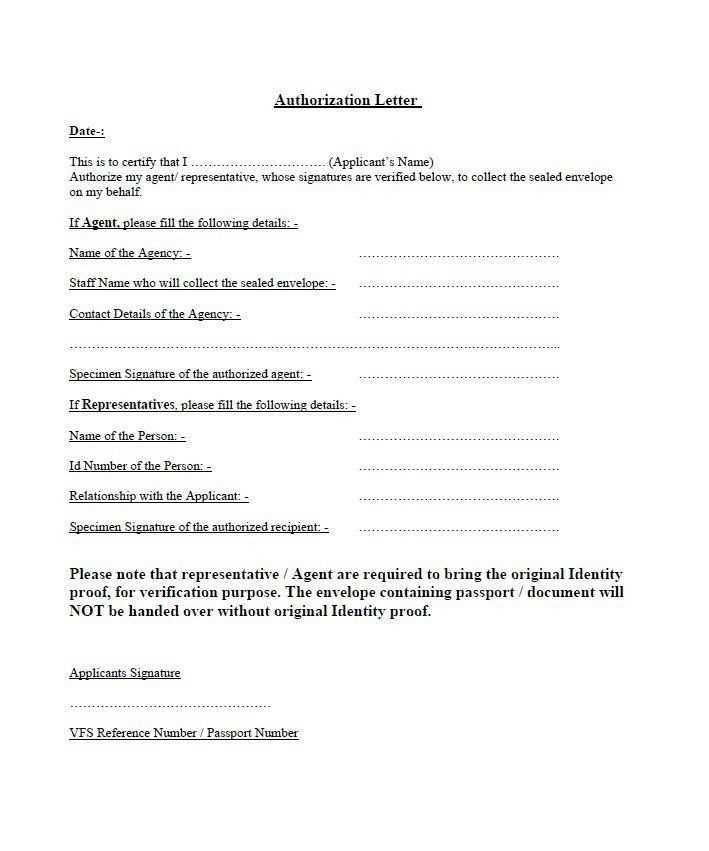Letter to a representative template

Begin by addressing the recipient properly, ensuring the salutation is appropriate for the nature of your relationship. If you’re familiar with the representative, use a more informal greeting like “Dear [Name],” or, if the relationship is more formal, opt for “Dear [Title] [Last Name].” A respectful tone is key, setting the stage for the purpose of your message.
State the reason for your letter right away. Whether it’s a request for action, clarification, or information, being direct helps the reader understand your intention without unnecessary elaboration. For example, “I am writing to request assistance with…” or “I would appreciate your help regarding…” ensures that the purpose is clear from the start.
Provide any necessary details or context next, focusing on relevant facts and figures. Use specific examples or documents if applicable, but avoid overwhelming the reader with excessive information. If you are asking for a response or action, outline your expectations or timeline. A sentence like “I look forward to hearing from you by [date]” gives clarity on the urgency of the matter.
Conclude the letter by reiterating your request politely. Express appreciation for the representative’s time and assistance. End with a closing such as “Sincerely,” followed by your name and contact information. This helps maintain professionalism while ensuring your message is easy to follow and respectful.
Here is the corrected version with the repetitions removed:
Remove any unnecessary restatements of points in your communication. Aim for clarity and brevity. Directly address the key issues or requests, ensuring the message flows smoothly from one idea to the next. Organize the content logically so that the recipient can easily follow the main points.
Steps to Remove Redundancies
Identify sentences or phrases that repeat the same information. Use synonyms or rephrase the content to keep the message clear without over-explaining. This method helps keep the tone professional and concise.
Examples of Improved Sentences
| Original | Revised |
|---|---|
| I would like to ask you if it’s possible to meet, and I hope we can schedule a time to meet soon. | Could we schedule a time to meet soon? |
| Please kindly let me know your availability so we can discuss the matter further. | Let me know your availability to discuss the matter further. |
By eliminating repetition, your letter becomes more efficient and easy to understand. Ensure the core message is delivered without unnecessary elaboration.
- Letter to a Representative Template
Begin with a clear and concise greeting to the representative. Personalize it with their name or title, if known. This sets the tone for the rest of the letter.
Introduction
State the purpose of your letter right away. Be direct about why you’re reaching out, whether it’s to express concerns, offer suggestions, or request action. Clarity helps the representative understand your message quickly.
Details of Your Request
- Provide specific details about the issue or topic you want to address.
- Include facts, figures, or examples to support your point.
- Ensure that your request is actionable and clear.
Finish by requesting a response or action. If appropriate, mention how you can be reached and offer your availability for further discussion.
Closing
End with a polite but firm closing. Thank the representative for their time and attention. Offer a respectful sign-off, such as “Sincerely” or “Best regards,” followed by your name and contact information.
Choose the format that best suits the nature of your message. If your communication involves formal requests, like asking for information or addressing a concern, opt for a traditional letter format. This adds a sense of professionalism and seriousness to your message. A letter format should include a clear introduction, the body with details of your request, and a formal closing. This format is best for business communication or official matters.
For informal or casual topics
Use a more relaxed approach. An email format works well when you need to get in touch quickly or discuss something in a less formal context. Emails can be concise, and while a professional tone is still appreciated, it doesn’t require the rigidity of a letter. Make sure the subject line reflects the message’s content, and keep the body to the point.
When to use a memorandum
A memo is ideal when you need to convey specific information within a company or organization. It’s concise and typically addresses an internal audience. Stick to a clear subject line and brief paragraphs outlining the key points. A memo format helps maintain clarity while keeping the message short and direct.
Begin with a clear subject line that directly reflects the purpose of your letter. A specific subject ensures your message stands out and immediately communicates the intent.
Contact Information
Include your name, address, and contact details at the top. This provides the recipient with all the necessary information to respond or reach out for further discussion.
Salutation

Address the recipient politely, using their formal title and last name, unless a more casual approach is acceptable. This sets the tone for your communication.
State the purpose of your letter in a concise opening sentence. Being direct about why you are writing helps maintain clarity and focus throughout the letter.
Use specific details or examples to support your message, ensuring that your points are clearly understood. Avoid vague statements and be as precise as possible with your facts or requests.
Conclude with a respectful closing, thanking the recipient for their time or consideration. Make sure your call to action is clear and courteous, inviting further communication if necessary.
Finally, sign your name and include any necessary follow-up information, such as your availability or preferred method of contact, to facilitate a response.
Begin by using the correct title or honorific. Addressing a representative with their proper title demonstrates respect and professionalism. If you know their position, such as “Representative” or “Senator,” use it before their last name. In cases where their formal title is unknown, a simple “Dear [Full Name]” will suffice.
- Use “Dear” followed by the title and last name, such as “Dear Representative Smith.” If the representative holds a different title, use that, for example, “Dear Senator Johnson.”
- If you’re unsure of their title, a polite “Dear [Full Name]” works well. Avoid casual salutations like “Hey” or “Hello.”
- Ensure you’ve spelled their name correctly. Double-check the spelling to avoid errors that could make the letter feel less professional.
Stay formal and courteous throughout the communication. This approach shows professionalism and respect for their office and position. Avoid overly familiar language, even if you’ve had prior interactions with the representative.
- Using “Mr./Ms.” and the last name maintains a professional tone in all cases.
- If the representative has a specific role (e.g., Chairperson, Vice-Chair), be sure to use that designation where appropriate.
End your letter with a respectful closing such as “Sincerely,” followed by your name. This reinforces the professional nature of your communication and leaves a positive impression.
Use direct language to express your main point. Avoid unnecessary details and jargon that might confuse the reader. Focus on one key idea or request and make sure every sentence serves that purpose.
Be Specific and Straightforward
Clarity comes from being specific. Clearly state what you’re asking for or what you’re offering. If your message is about scheduling a meeting, include exact times or preferred methods of contact. The more precise you are, the less room for misunderstanding.
Keep it Brief
Stick to the point. A concise message keeps the reader’s attention and respects their time. Eliminate any words or phrases that do not directly contribute to the main message. Avoid rambling or adding unrelated information, as this can dilute the impact of your communication.
Check your letter for clarity and coherence. Ensure each paragraph flows logically into the next, with clear connections between your ideas. If a section feels disjointed, revise it for better flow.
Review Grammar and Spelling
Look out for common grammar mistakes, such as subject-verb agreement and incorrect use of tenses. Use spelling tools, but don’t rely on them entirely; sometimes they miss errors or suggest incorrect changes.
Check Tone and Formality

Ensure the tone is appropriate for the recipient. If it’s a formal letter, avoid casual language or contractions. Re-read the letter to make sure your message sounds respectful and professional throughout.
Pay attention to sentence length. Too many long sentences can confuse the reader, while too many short ones can make your letter sound choppy. Aim for a balanced structure.
Review the opening and closing. Make sure your introduction clearly states the purpose of the letter, and your conclusion leaves a solid impression, encouraging a response or action.
After sending your letter, it’s crucial to stay on top of any potential responses. Plan a clear follow-up strategy to ensure your message gets the attention it deserves. Contact the representative within a set timeframe–typically one to two weeks after mailing–if you haven’t received a reply. This ensures the communication hasn’t been overlooked or lost.
Methods of Follow-up
Choose the most appropriate method for reaching out. A polite phone call or email can be highly effective. If you’re following up via email, be concise and professional. Avoid repeating the original content; instead, reference the letter and ask for an update or clarification. If you opt for a phone call, be ready to quickly summarize your letter’s key points to streamline the conversation.
Key Follow-up Tips
Always maintain a friendly tone, even if the reply has been delayed. Remain patient, but firm, in requesting a response. Keep your follow-up message short–people often appreciate brevity. Make it easy for the recipient to reply by providing clear questions or points to address.
| Follow-up Method | Best Timing | Recommendation |
|---|---|---|
| 1-2 weeks after the letter | Be clear and concise in the subject and body of the email. | |
| Phone Call | 1-2 weeks after the letter | Prepare to briefly summarize the letter’s content. |
| Letter (Physical) | 2-3 weeks after the original | Send a polite reminder letter with a direct request for an update. |
When addressing a representative, be concise and to the point. Clearly state the purpose of your letter, whether it’s a request, concern, or feedback. This helps ensure your message is understood without unnecessary complexity.
Structure Your Letter

- Use a clear subject line, such as “Request for Assistance with [issue].”
- Begin with a polite greeting, addressing the representative by name, if known.
- Explain your request or issue in a direct manner, outlining any relevant details.
- If applicable, reference any previous communications or actions taken.
- Conclude with a specific call to action, asking for a response or assistance within a set timeframe.
- Sign off politely with your full name and contact information for follow-up.
Additional Tips
- Keep your tone professional but friendly. Avoid sounding demanding.
- Provide any necessary documentation to support your request, such as receipts or case numbers.
- Review the letter for clarity and errors before sending.